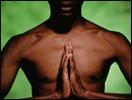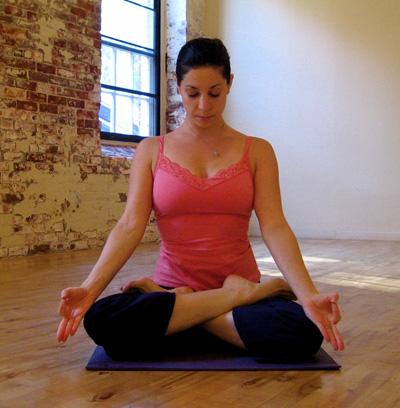How to Meditate
by Amy Scholten, MPH
Meditation involves focusing your mind continuously on one thought, word (mantra), object, or mental image for a period of time. It can also involve focusing on your breathing or on sensations in your body. The goal of meditation is to quiet your mind.
Benefits of Meditation
Meditation leads to changes in the body known as the relaxation response. These changes accompany deep relaxation and may include:- Reduced heart rate and blood pressure
- Reduced respiratory rate and oxygen consumption
- Reduced blood flow to skeletal muscles
- Reduced muscle tension
- Increased immunity (resistance to or recovery from illness)
- Increased energy, awareness, and mental focus
- Relieve symptoms of premenstrual syndrome (PMS)
- Reduce the intensity of hot flashes in menopausal women
- Reduce blood pressure in people with hypertension
- Treat and prevent heart disease, strokes, migraine headaches, diabetes, and arthritis
- Reduce anxiety, obsessive thinking, depression, hostility, and pain
Guidelines
The following guidelines are recommended for meditation:- Try to do it every day, preferably at the same time (morning is best).
- It is best to do it before eating, when the stomach is empty.
- Find a quiet and semi-dark place to use only for meditation.
- Set aside at least 20 minutes. (You may have to work up to this.)
Basic Technique
There are many different types of meditation and no right technique for everybody. You need to find out what works best for you. Most types of meditation include the following basic elements:Position
Before engaging your mind, follow these guidelines to make your body comfortable.- Sit in a comfortable position on the floor or in a chair.
- If you choose a chair, keep your knees comfortably apart and rest your hands in your lap.
- If you sit on the floor, choose one of these poses:
- Tailor fashion (cross-legged) with a cushion under your buttocks
- Japanese fashion (on your knees, with your big toes touching and your buttocks resting on the soles of your feet) with a cushion between your feet and buttocks
- The yoga full lotus position (not recommended for beginners)
- Keep your spine straight and vertical, but not rigid.
- Briefly rock from side to side and from front to back until you feel comfortable and balanced on your hips.

Focus
In order to direct your thoughts, do the following:- Close your eyes (unless the focus of your attention is an object).
- Focus your attention on one of the following:
- A silent thought, word, or prayer
- A mental image
- The sensation of each breath as you inhale and exhale
- An object such as a candle flame, flower, painting, or bare wall
Attitude
It is important to maintain a gentle and nonjudgmental attitude while you meditate. This will help you to relax. Do not be concerned about your goals or whether or not you are meditating correctly. Keep the following points in mind:- As a beginner, it is natural for your attention to wander frequently.
- When your attention wanders, gently redirect it back. Do not try to force your attention. Meditation should not be stressful!
Breathing
Proper breathing can enhance your experience.- Breathe through your nose, if possible.
- Place your tongue on the ridge behind your upper teeth.
- Focus your attention on your tummy and diaphragm rather than your nostrils and chest.
- Place your hand on your tummy and feel the sensations as you inhale and exhale.
- Your tummy should rise when you inhale and fall when you exhale.
- Be attentive to your breathing, but stay relaxed and breathe naturally.
Progress
Meditation should become easier with regular practice. Experiment to find out what technique works best for you. Consider taking a meditation class. Many different techniques are taught. Some have a spiritual focus and others are more focused on stress reduction.ReferencesDavis M, McKay M, Eshelman ER. The Relaxation and Stress Reduction Workbook. 5th ed. Oakland, CA: New Harbinger Publications; 2000.Kabat-Zinn J. Full Catastrophe Living: Using the Wisdom of Your Body and Mind to Face Stress, Pain, and Illness. New York, NY: Delacorte; 1990.
American Medical Association. The relaxation response. Medical Library. Medem website. Available at: http://www.medem.com/medlb/article_detaillb.cfm?article_ID=ZZZN1SCZN6E&sub_cat=0. Accessed January 17, 2009.
